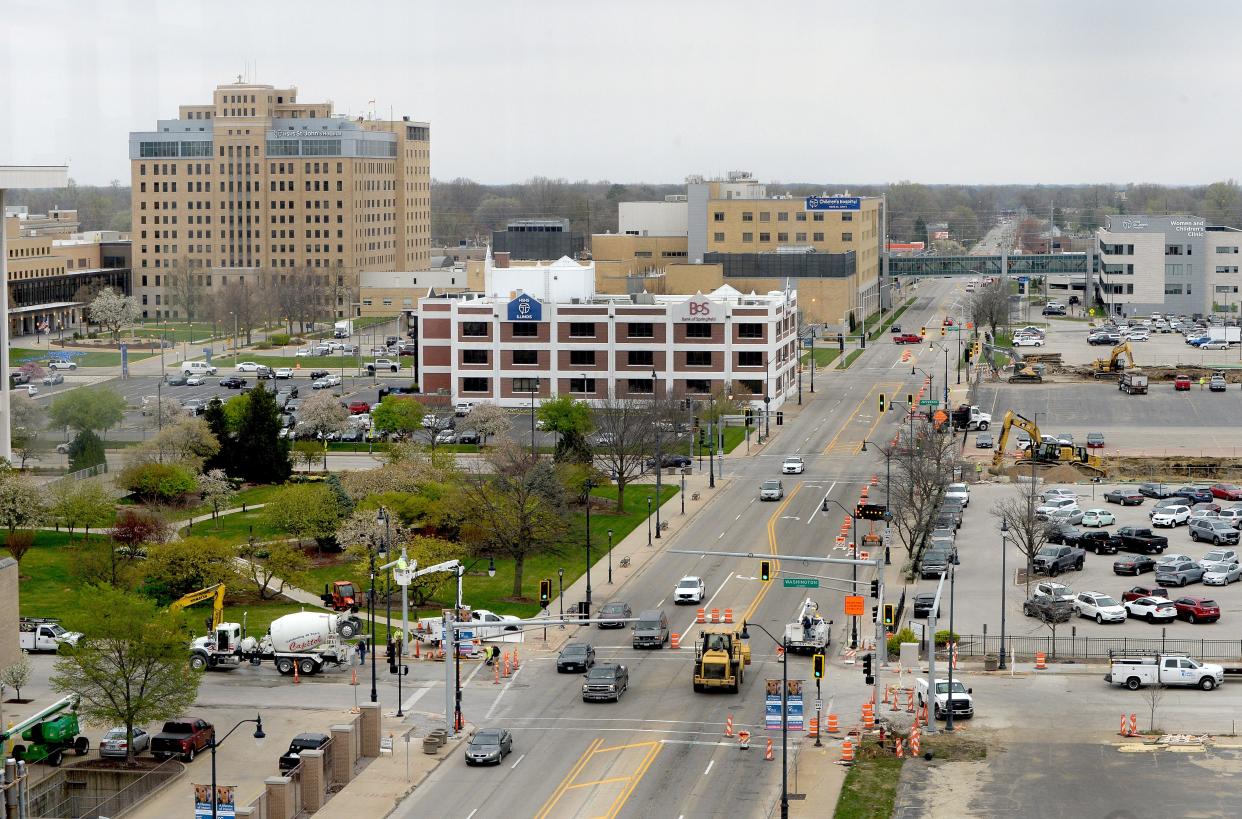New data shows nearly every Illinois county see a decrease in population from 2020-2023
Illinois saw a decrease in new residents between July 2020 and July 2023, according to new estimates from the U.S. Census Bureau. The Census Bureau recently released its vintage population totals nationwide.
The new data reports the population of Illinois is sitting at 12,549,689. According to the same dataset, Sangamon County is floundering as well as other Illinois counties, but none compared to Cook County, which has the second highest rate of population decay nationwide.
Illinois saw losses in almost every county
Overall, in estimate Illinois saw a decline in growth from just over 12.813 million in 2020 to 12.549 million 2023.
Cook County, which is home to the Chicago metropolitan area, has been on rapid decline since July 1 of 2020, losing 82,689 in 2021, 94,927 in 2022 and 58,105 in 2023.
Locally, Sangamon County saw a decrease from July 1 of 2020 to 2023 of 196,144 to 193,491, or 1.35% of the county's population was lost.

Public management associate professor Richard Funderburg teaches economic impact analysis at University of Illinois Springfield and according to him, even though domestic migration has been receding since the 1970s, international migration can make up for that number.
“We refer to cities like Los Angeles and Chicago as gateway cities,” Funderburg said. “You can see how a lot of this is viewed through domestic migration while international migration is positive right now. … That has been occurring for quite some time.”
Population loss can lead to declines in basic required services and infrastructure; as the GDP declines, demands for hotels, shops, restaurants and taverns drop, leading to less employees at establishments which used to cater to more people.
“For years we’ve had no payroll growth and coming with that means no labor force growth,” Funderburg said. “Even before the pandemic I was pointing out while our labor force growth is tepid, our employment growth was pretty healthy. … What’s changed in the economy today is more so is that workers are extremely precious – and have a lot of market value.”
More: Springfield coffee shop owner taking to the sky full-time; selling business
Illinois’ history of population loss
While most of the United States saw growth, this census cycle mark’s Illinois’ 10th consecutive year of decline when it comes to population. The main cause of this decline is domestic migration, where a single person or family moves within the United States to another state.
In a lineup of all 50 states, Illinois has the 48th worst population change just behind California and New York.
Illinois is still seeing a higher birth rate outpacing deaths and gaining new citizens moving in from abroad, but those inclines can’t smooth out the rolling slope of Illinoisans moving out of state.
According to Illinoispolicy.org, when taxes were not a response option, surveys of those who left the state showed the major reasons were for better housing and employment opportunities.
Other surveys showed taxes consistently coming up as the number one reason for state residents leaving; a 2019 poll from NPR Illinois and the U of I found 615 of Illinois residents considered moving out of state due to high taxes.
Funderburg emphasized that despite Cook County, the changes in population across Illinois have been relatively small. Current data sets come from estimates of the census between years, but the true change can be affirmed through the Census – where Illinois saw overall positive growth in the 2010 census.
“One of the biggest locational factors is achieving a site to do business in,” Funderburg said. “We’re in trouble for future employment growth. I’ve actually been pointing that out to people more recently, we’ve also seen no change in payroll which is unusual, since the rest of the country is roaring. Illinois has really flat payroll growth.”
Only six counties in Illinois saw growth from 2020 to 2023
Out of 102 counties in Illinois, seven saw growth: Brown County, Bureau County, Grundy County, Jo Daviess County, Kendall County, McHenry County and Will County – which saw its population increase to 700,000 from 696,000.
The shift from Metropolitan suburbs and high-rise cities to smaller but still outfitted communities is tied to factors such as rent increasing, pandemic-related shifts to working from home meaning people didn’t have to live in higher-expense cities and as Funderburg explains it – a whole lot more.
“They cost – locations,” Funderburg said. “Living somewhere more affordable and still can have demand on high paying jobs via distance. It’s a real dilemma for urbanists like myself that are concerned about the futures of our cities.”
Claire Grant writes about business, growth and development and other news topics for the State Journal-Register. She can be reached at CLGrant@gannett.com; and on X (Formerly known as Twitter): @Claire_Granted
This article originally appeared on State Journal-Register: Census data: Illinois sees another drop in population from 2020-2023
